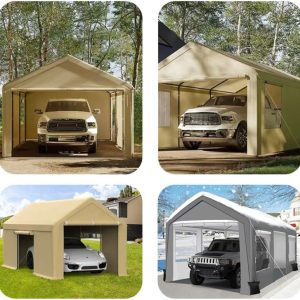
# Enclosed Livestock Shelter Design and Management
## Introduction to Enclosed Livestock Shelters
Enclosed livestock shelters have become increasingly popular among farmers and ranchers seeking to provide better protection for their animals. These structures offer numerous advantages over traditional open shelters, including improved climate control, enhanced biosecurity, and better protection from predators.
## Key Design Considerations
### Structural Integrity
When designing an enclosed livestock shelter, structural integrity should be the top priority. The building must withstand:
– Heavy snow loads in winter
– Strong winds
– Potential impact from large animals
– Long-term wear and tear
### Ventilation Systems
Proper ventilation is crucial for maintaining animal health. A well-designed system should:
– Provide adequate air exchange
Keyword: Enclosed Livestock Shelters
– Prevent moisture buildup
– Minimize drafts in winter
– Allow for temperature regulation in summer
### Flooring Options
Choosing the right flooring depends on the type of livestock:
– Concrete: Durable but requires proper bedding
– Rubber mats: Comfortable but more expensive
– Dirt floors: Natural but harder to clean
– Slatted floors: Excellent for drainage but not suitable for all species
## Management Best Practices
### Daily Maintenance Routines
Effective shelter management includes:
– Regular cleaning of feeding areas
– Frequent bedding replacement
– Daily inspection of water systems
– Monitoring of ventilation equipment
### Biosecurity Measures
Implementing strong biosecurity protocols helps prevent disease outbreaks:
– Designated entry points with sanitation stations
– Quarantine areas for new animals
– Rodent and pest control programs
– Proper manure management systems
## Seasonal Considerations
### Winter Preparation
Before cold weather arrives:
– Insulate water lines to prevent freezing
– Stockpile extra bedding materials
– Check heating systems (if used)
– Ensure proper ventilation while maintaining warmth
### Summer Management
During hot months:
– Increase ventilation
– Provide shade options
– Ensure constant access to clean water
– Consider misting systems for cooling
## Cost-Benefit Analysis
While enclosed shelters require higher initial investment, they often provide:
– Reduced veterinary costs from better health
– Improved feed conversion rates
– Higher quality animal products
– Longer productive lifespans for breeding stock
– Lower mortality rates
## Future Trends
Emerging technologies in enclosed livestock shelters include:
– Automated environmental control systems
– Solar-powered ventilation
– Smart monitoring devices for animal health
– Advanced waste management solutions
– Energy-efficient lighting systems
By carefully considering both design and management aspects, farmers can create enclosed livestock shelters that maximize animal welfare while maintaining operational efficiency. The key is to balance initial costs with long-term benefits, adapting designs to specific livestock needs and local climate conditions.